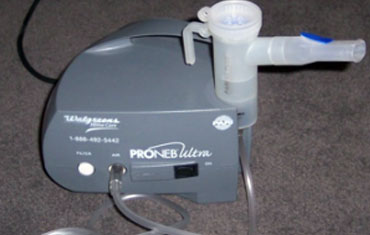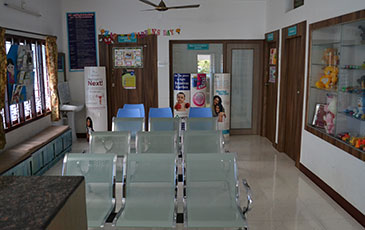What is Asthma?
Asthma is a chronic condition due to obstruction in airflow leading to symptoms like cough, wheezing, chest tightness, breathing difficulty etc. These symptoms usually occur periodically. Children with asthma have narrowed airways during these episodes which is partially or completely reversible with treatment.
What causes Asthma?
There are many genetic and environmental factors that can increase the risk of developing asthma like
Environmental Pollution: Exposure to indoor and outdoor pollution like dust, smoke can increase the risk of developing asthma
Smoking tobacco: Exposure to cigarette smoke both inside or outside the house increase the risk of asthma
Family history– Kids with family history of asthma, allergies or eczema (dry skin) are at increased risk of developing asthma.
However, in some children no real cause for asthma is found
What are the usual triggers, which bring an asthma attack?
- Respiratory infections: – Viral respiratory infections (Common cold) can trigger asthma in infants and young children. So kids with asthma should use asthma treatment for cough and cold rather than cold medications.
- Environment: Kids with seasonal allergies, asthma can be triggered during certain seasons of the year when the trees or grasses pollinate (especially during summer) or due to molds (fungus) during rainy season. Cold air can trigger asthma in some kids.
- Allergens: allergens like House dust , cats, dogs, paint, perfume etc can trigger an asthma attack
- Exercise: Asthma can be triggered by exercise (during sports, swimming etc) in kids who have exercise-induced asthma. The symptoms usually start within 5 to 10 minutes of start of exercise and would disappear after 20 to 30min after exercise.
Asthma symptoms:
- Cough: Cough due to asthma is usually dry and hacking and is more pronounced while the child’s sleep and during the early morning.
- Wheezing: This is a high-pitched musical noise usually heard when the child breathes out. It can be either very obvious or some times it can only be hared using a stethoscope.
- Chest tightness: Some times kids complain of tightness in the chest or chest pain and is mostly due to difficulty in exhaling the air out.
How does the doctor diagnose asthma?
Diagnosing of asthma in children is usually based on Child’s symptoms, past history, family history and physical examination. Some times special testing might be needed to diagnose asthma like
Spirometry test: This test will measure the lung function and its capacity. This test involves measurement of volume and flow of air after the child takes a deep breath and then forcefully tries to blow the air out. If airflow obstruction is detected then this test is repeated after a medicine to dilate the airway was given (bronchodilator) and checking for improvement in obstruction (a feature of asthma)
Peak flow rate: This test is usually done for kids above 5 yrs of age and it involves the child to take a deep breath and then quickly blow out into a device called Peak Flow Meter. This test can be use for daily home monitoring of kids with asthma
Treatment of Asthma
This depends on the age of the child, severity and frequency of asthma attacks.Successful treatment depends on avoiding the triggers, regular monitoring for asthma symptoms and proper use of medications.
Control of asthma triggers: Prevention is always better than cure. Effective avoidance or limitation of triggers of asthma like dust, pollens, animals, respiratory infections, cigarette smoke etc can significantly decrease the asthma attacks and will keep your kids asthma in control.
Monitoring of symptoms: Recording the asthmasymptoms and use of medication in a dairy is very important. It will help your doctor to assess the severity of the disease and help in further management.
Medications: Use of medications to treat asthma depends on the child’s age, severity and the level of asthma control.
- Severity of asthma: Your child’s asthma can be broadly categorized into two
- Cough:Intermittent asthma
- Persistent asthma
- Intermittent asthma – If your child has minimal symptoms and infrequent asthma attacks and has one of the following
- Symptoms of asthma occurring less than 2 times /week
- Night time awakening due to asthma symptoms occurring less than 2 times /month
- Required oral steroids no more than once per year.
Persistent Asthma - When the child has regular and more frequent asthma symptoms. This is further classified as mild, moderate or severe.
- Medications, which are used for treatment of asthma, can be classified into two categories:
- Medications, which bring QUICK RELIEF of symptoms.
- Medications which keep the asthma under CONTROL
Quick Relief medications: (These medications are used only if there is asthma symptoms, usage of these medications would not prevent future asthma attacks).
Bronchodilators: Short acting bronchodilators relieve asthma symptoms rapidly by relaxing the narrowed airways. The commonly used short acting bronchodilator in India is Salbutamol.
Nebulizer Vs Metered dose inhaler (MDI): Salbutamol can be delivered with a nebulizer or a MDI +/- Spacer +/- face mask

Nebulizers change a liquid medication to a fine spray that can be inhaled using mask

MDI: This device dispenses liquid or powder medications in a particular dose and can be breathed into the lungs. Using a spacer anda face maskhelps to deliver greatest amount of medication into the lungs
Controller Medications: For kids with persistent asthma these medications are used to keep the asthma under control (preventing an asthma attack). These medications need to be taken daily even there is no asthma symptoms.
Inhaled Steroids (glucocorticoids): They work by reducing the inflammation and swelling in the airways and help prevent the asthma attacks. This medication is used in kids with persistent asthma. It can be taken by a MDI with a spacer +/- mask or by a nebulizer. Remember this medication has to be taken daily and is usually used in kids with persistent asthma..
Will there be any side effects from inhaled steroids? (STEROIDS!!!…)
Unlike glucocorticoids (steroids) that are taken by mouth, very little of the inhaled medication is absorbed into the body, so there will be very few side effects. But when higher doses are used, then some of the medication can be absorbed and can cause some side effects. Though the side effect for this medication is a common concern for most parents, the risk form an untreated asthma is far more than the side effect from this medication (minimal side effect if any)
Leukotriene Modifiers: (montelukast) This class of medication is some time used in addition to the inhaled steroids in kids who have severe or uncontrolled asthma.
Long acting bronchodilators: Long acting bronchodilators like Salmetrol are similar to short acting bronchodilators but they have long lasting effect. These medications are used only in combination with an inhaled steroid and should not be used alone to control asthma.
Mast Cell Stabilizer (Cromolyn): This medication can be taken as alternative to inhaled steroids in mild persistent asthma kids but is less effective than the inhaled steroids and is also less convenient as it has to be taken 3-4 times a day.
Asthma is a serious medical condition in children and it can lead to severe attacks and even death if not treated properly. Talk to your pediatrician for formulating an effective treatment strategy. Contact the emergency department if your child has any symptoms.




